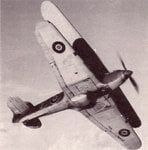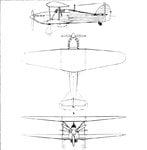fastmongrel
1st Sergeant
We all know that the Biplane fighter was history after the late 30s with the advent of metal, retractable undercarriage monoplanes like the 109 and Spitfire.
If we pretend that the monoplane fighter was for some reason a disaster and never got into production and all the major airforces carried on with the development of the Biplane. What sort of performance could have been expected from an ultimate Biplane fighter using the same engines and technology as were available in real life.
Comparing an advanced Biplane fighter with all the latest aerodynamic refinements a metal monocoque fuselage, metal wings with a minimum of struts and wires (the Henschel Hs 123 seemed to have few or possibly no wires and only 2 large struts between the wings and 2 small ones from the fuselage to the upper wing), a bubble hood, retractable undercarriage and a Merlin 1,500hp V12 to the P51D Mustang. How much slower is the Biplane going to be, I imagine aerobatic performance might be better with the bigger wings and possibly climb might be quite good but where is this imaginary plane really going to struggle.
I like the idea of the Battle of Britain fought by advanced Biplanes from Bristol and Gloster on one side and Arado and Fiesler on the other
If we pretend that the monoplane fighter was for some reason a disaster and never got into production and all the major airforces carried on with the development of the Biplane. What sort of performance could have been expected from an ultimate Biplane fighter using the same engines and technology as were available in real life.
Comparing an advanced Biplane fighter with all the latest aerodynamic refinements a metal monocoque fuselage, metal wings with a minimum of struts and wires (the Henschel Hs 123 seemed to have few or possibly no wires and only 2 large struts between the wings and 2 small ones from the fuselage to the upper wing), a bubble hood, retractable undercarriage and a Merlin 1,500hp V12 to the P51D Mustang. How much slower is the Biplane going to be, I imagine aerobatic performance might be better with the bigger wings and possibly climb might be quite good but where is this imaginary plane really going to struggle.
I like the idea of the Battle of Britain fought by advanced Biplanes from Bristol and Gloster on one side and Arado and Fiesler on the other




